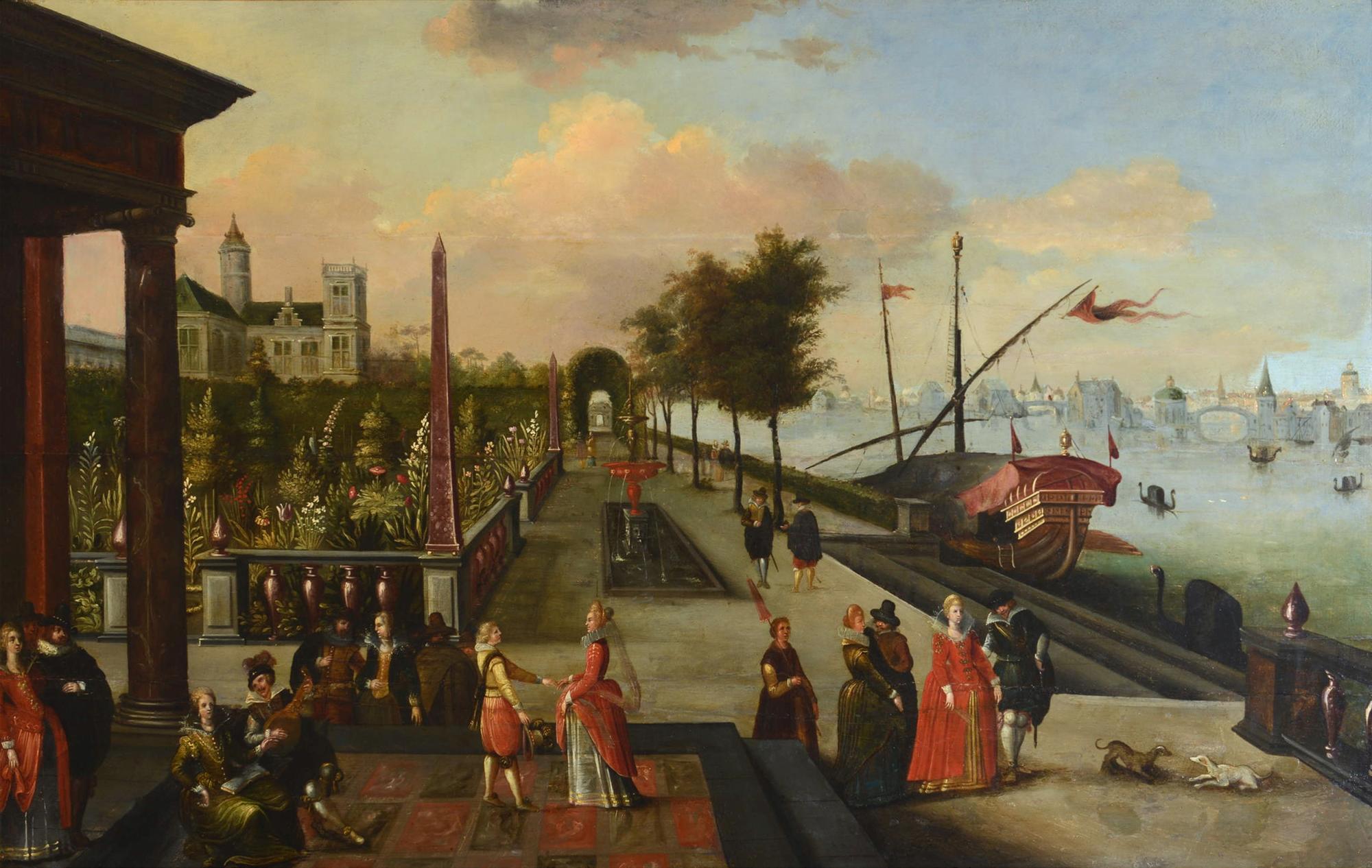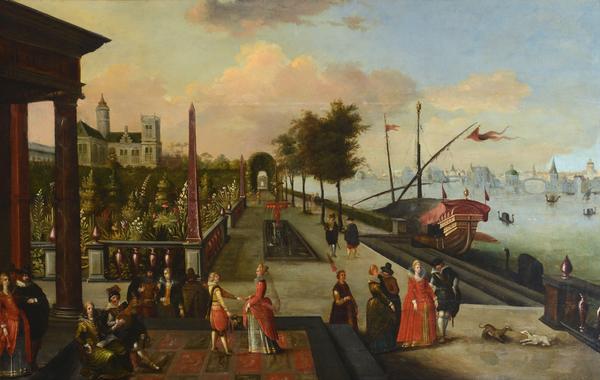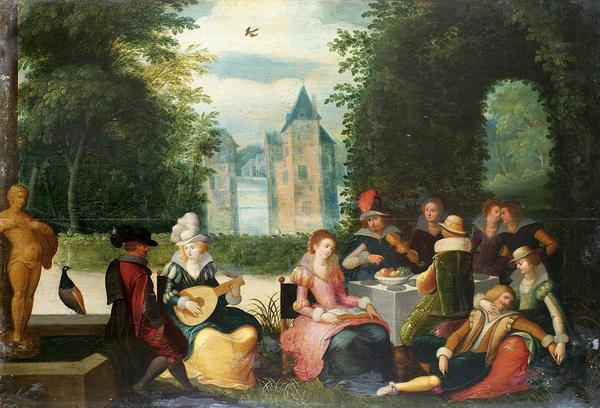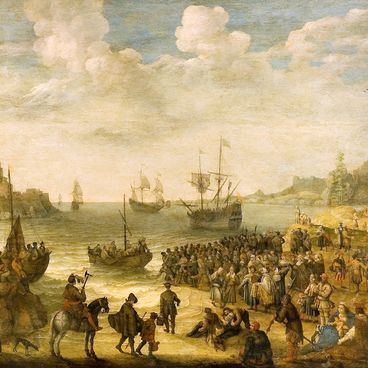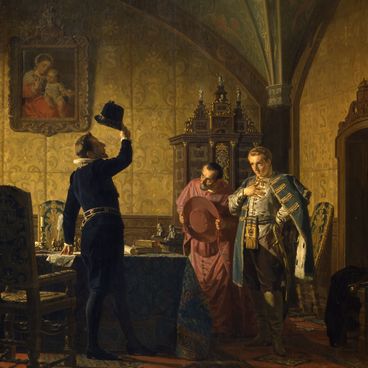The author of the Walking Along the Waterfront is a famous Flemish painter of the 17th century Louis de Caullery. He painted the picture in 1602 – 1605. This is the earliest painting of Netherlandish masters in the Radishchev Museum.
Walking Along the Waterfront
Время создания
1602 – 1605
Размер
59x93 cm
Техника
Wood, oil
Коллекция
2
Открыть в приложении#3
Louis de Caullery
Walking Along the Waterfront
#2
#4
De Caullery was born in the city of Cambrai, in the North of France. His first teacher was his father who painted miniatures. It was him who taught Louis to paint minute details and master a thin brush. Then de Caullery moved to Antwerp to study under famous Flemish landscape artist Joos de Momper.
Having completed his studies, the artist travelled over Italy; he visited Venice, Rome and Florence. Under the influence of Italian fine arts de Caullery developed his own style: he used yellow, green and red colors in his paintings. Such palette was not typical for Flemish masters of that time period.
#5
Moreover, de Caullery was the first to paint open-air festivities of courtiers. He painted episodes from social life of the upper classes, carnivals and allegoric pictures: metaphorical paintings with implied meaning.
#10
Louis de Colery. Elegant company on a picnic. Around 1610 Museum of Warmia and Masuria. The picture is an allegory of the five senses (from left to right): hearing, contemplation, touch, smell and taste.
#6
One of the most favorite topics for de Caullery was The Garden of Love, a subject that shows relationship between a man and a woman against the background of fragrant nature. In his painting Walking along the Waterfront the artist uses the same subject, however having turned the garden into a park at the river front.
In the foreground there are smartly dressed ladies and gentlemen walking along the promenade. De Caullery develops the minute details of their attire. In the center of the image there is an alley stretching off into the distance, with a red fountain in the middle. To the right of the alley de Caullery shows a river bank with a mooring sailboat.
#7
Similar to his other works, de Caullery associates the Garden of Love with the topic of sensual feast, and therefore, with the allegory of human senses. The musician that plays for the lady signifies the hearing. The vision is shown via the park visitors who are watching the landscape. In the foreground a lady and a gentleman are walking hand in hand, which signifies the sense of touch. Nearby there are two dogs smelling at each other: this is the sense of smell.
#8
‘Walking along the Waterfront’ is associated with theatre traditions of that time. The landscape of the painting reminds of stage sets: blue cloudy sky, smooth silver surface of the river, light-brown architecture. The garments resemble theatrical costumes of actors: the painter selects bright full colors, like lemon-yellow, emerald, red.
#9
Before the revolution the painting was kept in the collection of the entrepreneur Heinrich (Henri) Brocard. He used to own a vast collection of Flemish paintings. Then the Walking along the Waterfront was transferred to the Pushkin State Museum of Fine Arts. In 1933 it was delivered to the Radishchev Museum in Saratov.
#11
A.N. Radishchev Saratov State Museum of Fine Arts
читать дальшескрыть
00:00
00:00
1x
Walking Along the Waterfront
Время создания
1602 – 1605
Размер
59x93 cm
Техника
Wood, oil
Коллекция
2
Открыть в приложении
Поделиться
